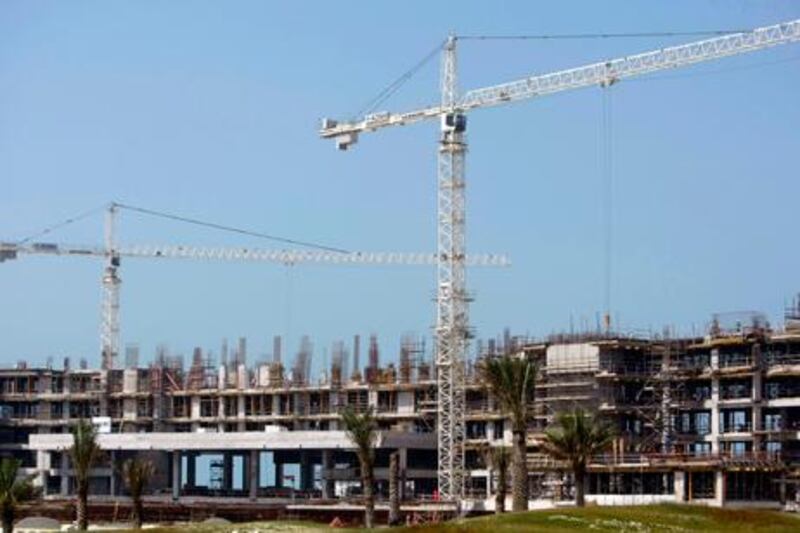More than a third of hotels planned across the Middle East and North Africa (Mena) region is set to be built in the Emirates.
About 41,000 rooms are to be constructed in the UAE, representing 42 per cent of the total in the Mena region, according to STR Global, an occupancy benchmarking firm based in London, and Christie + Co, the hotel consultancy.
“A lot of this pipeline is a hangover from the boom times,” said Gavin Samson,the managing director of Christie + Co Middle East and North Africa.
“This market in particular saw such a weight of new development and potential new development being put into action prior to the boom that a lot of the projects are still there in some shape or form.”
Of the total number of hotels previously announced to be built in the UAE, 54 per cent are confirmed, 25 per cent are on hold and 21 per cent have been postponed indefinitely.
“It doesn’t surprise me that the UAE tops the list. I wouldn’t refer to it as a bubble, simply because pipeline is an ever-changeable feast, depending on which way the economy goes some of those projects may continue to drop off or slow down,” said Mr Samson.
The hotel and hospitality market in the Emirates is forecast to grow at a rate of more than 10 per cent for the next four years, outpacing growth in the overall economy.
Revenues from the hotel and hospitality market will reach US$4.9 billion (Dh17.99bn) this year, up from $4.5bn last year, and is forecast to grow to $7.5bn by 2016, according to Alpen Capital’s latest GCC industry report, released last month.
Some of the new hotel brands set to enter the Emirates for the first time are W
Hotels, the Four Seasons, Conrad Hotels& Resorts, and Oberoi Hotels & Resorts, according to the Christie analysis.
More than two thirds of the hotels in the pipeline for the UAE are upmarket or deluxe and nearly half are in Dubai, with 28 per cent in Abu Dhabi and the remainder in other emirates.
Occupancy rates in Abu Dhabi have been falling this year as supply has outstripped the huge increase in tourists visiting the capital.
This has, in turn, also led to a fall in the daily rates being offered by hotels and the revenue they receive for each room.
Analysts, however, believe the supply-demand imbalance will eventually move towards equilibrium.
“Simply, it’s a timing issue with Abu Dhabi,” said Mr Samson. “There’s been a huge amount of supply in the last 18 months at the top end of the market and it will impact any market with insufficient demand drivers at the moment, which is what it’s doing.”
The story in Dubai has been slightly different this year as fewer hotels have been completed since the global financial crisis while tourists have flooded into the emirate, which has benefited from unrest across other parts of the region.
Occupancy rates for hotels in Dubai have subsequently been running at more than 80 per cent this year.
“You look at Dubai now and the performance and a lot of people would argue that the market can absorb a lot more,” said Mr Sansom. “But again, some people might say it’s a little artificial, based on the Arab Spring.
“Without doubt the demand drivers for Dubai are in place. What we don’t want to happen is see hotels price themselves out of the market again.”





